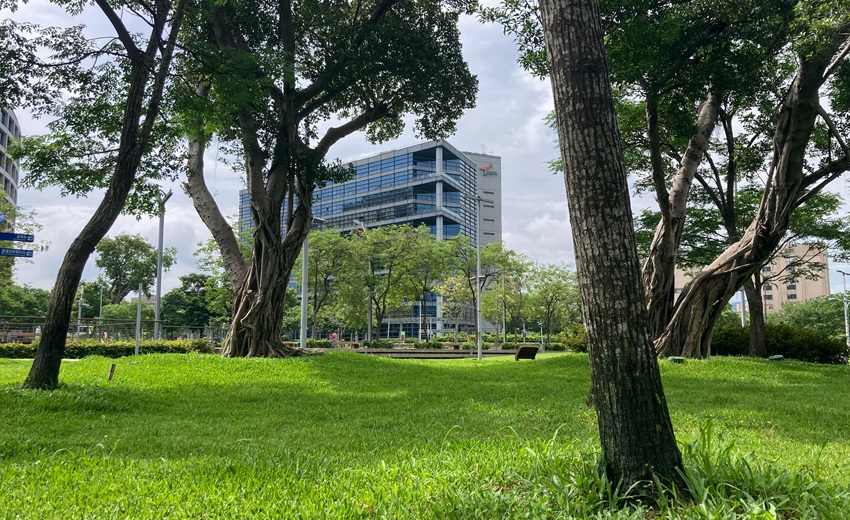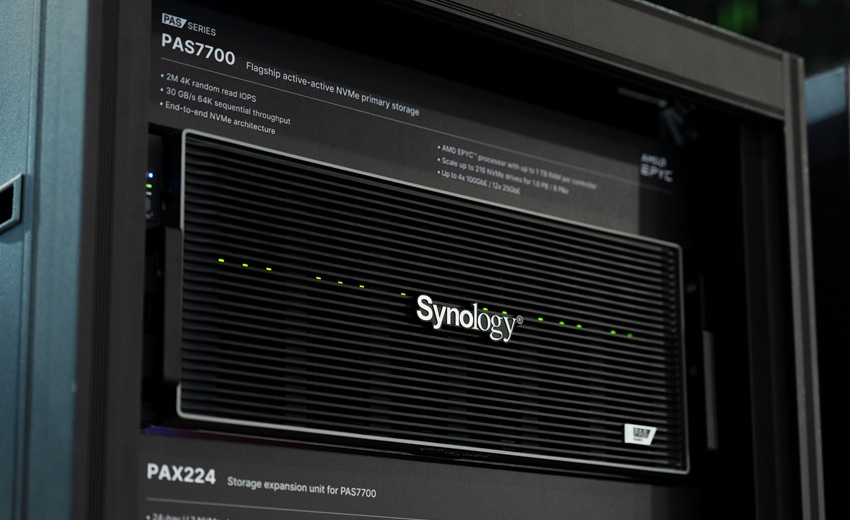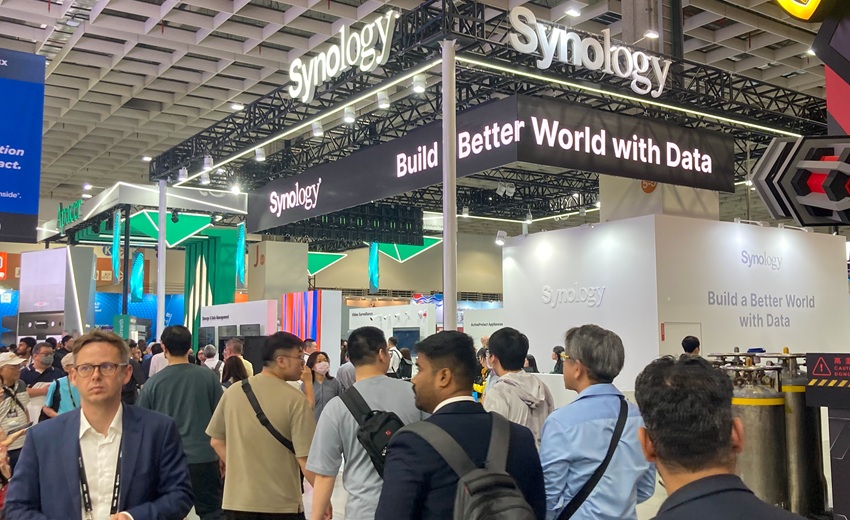Questions about third-party compatibility loomed large as Synology unveiled its latest innovations at Computex 2025 in Taipei—including a fully integrated cloud-based security system and a new high-performance NVMe storage solution for enterprise users.
The latest devices and AI-powered features were developed with all-Synology architectures in mind, but the company, which is known for NAS solutions that traditionally allow for a wide range of plug-and-play compatibility, said it will not change its philosophy.
A leap into the cloud
In terms of security systems, Synology took a leap forward into the cloud space as it launched its C2 Surveillance suite, which reinvents the company’s well-known security camera management tools as Video Surveillance-as-a-Service (VSaaS).
C2 Surveillance allows for the installation of new Wi-Fi-enabled cameras in less than two minutes, thanks to the new C2 Key, which the company developed specifically for the new cloud service as it seeks to guarantee the highest degree of cybersecurity amid simplicity and scalability.
The company's latest cam models send data directly to the cloud as local storage moves “to the edge” to ensure redundancy, via Synology's new 256GB micro SD card, developed specifically for 24/7 use. To ensure disruption-free service, C2 Surveillance comes with Failover Offline Mode, in which the camera sends its live images directly to the user’s smartphone—in case, for example, the Wi-Fi fails and the cloud cannot be reached.
Hybrid environment
The basic functions of C2 surveillance do not rely on the cloud, while the whole suite of AI tools make full use of cloud computing power.
The new AI-powered functions include semantic search and a user interface resembling an AI chatbot. Users can, for example, search for the features of a person—clothes, things they were carrying—or the color, make and model of a car, and C2 Surveillance will show them all footage that matches their request.
Many cloud surveillance providers are introducing AI-powered natural language tools—similar to the one offered by Synology—this year, but the offering of the Taiwanese company is special in that it's open source-based AI can “think ahead”: When opening the search function, the AI automatically suggest terms that the user will likely search for.
 Hardware testing is done in dedicated labs inside the
Hardware testing is done in dedicated labs inside the
Synology headquartersin New Taipei City
Has the AI, for example, detected a potential threat below the threshold that has been set for sounding the alarm in real time, it will suggest the corresponding search term. In an exclusive demo at Computex, it was “person carrying a gun.” It linked to footage of a Synology holding a toy gun at the Synology headquarters in New Taipei City's Banqiao, as prepared by the company.
The AI has been trained to detect all kinds of objects and instances that might be of interest—and Synology said it is continuing to expand the list of threats as it refines the AI.
Ease-of-use focus
"We aim to dramatically save the amount of time people [spend] looking for a footage ... simply by typing a natural language description,” Katherine Chiang, Product Marketing Manager at Synology, said as she introduced the new features during the demo. “The system actually suggests me potential incidents that it scans through our footage; one that really stands out is this: one person holding a gun."
Ease of use was also front and center when Synology developed another new feature, Chiang said as she introduced the Multi-Timeline Tool.
Here users can rewind and fast forward footage from all cameras in their system simultaneously—all on the same “pane of glass.”
“With this multi-view dashboard, we aim to streamline [investigations] by allowing users ... to rewind everything, multiple footages, using one single timeline,” Chiang said. “It can also help comply with time-specific policies such as safety audits.”
The third-party question
Synology's cloud services are—for now—only available with Synology cameras. This reflects a trend that has proven controversial among users. As the company's offering expands and its tools become more advanced, it no longer allows customers to plug in third-party devices and expect access to all features.
This was also on display when Cody Hall, Product Manager at Synology America, introduced the other great innovation the company brought to Computex: The PAS7700, active-active NVMe all-flash storage solution.
The PAS 7700, which offers 1.65 petabytes of raw capacity, is engineered for extremely high-performance workloads. This includes, for example, AI and machine learning environments and SQL database operations that have needs far beyond most security infrastructures.

During his presentation and demo, Hall confirmed that the PAS 7700 would only allow for the integration of additional Synology storage devices to increase capacity.
Hall said there would be no third-party integration for now “because [the PAS 7700] will be handling the most sensitive high-performance data. We want to make sure things like the drive voltages are consistent, the performance is consistent, and we can ensure that the drives are fully compatible.”
Highest testing standards
Later at the company's Computex booth, where all Synology innovations were on display, Hall explained that limiting extension options to a previously defined pool of devices was a necessity due to Synology’s highest testing standards—including for security systems.
He said the company needs to make sure that devices added to the system do under no circumstances compromise its performance—especially at the top end of the line.With regard to security infrastructures, however, he said Synology's third-party integration policy is “agnostic—and we’re going to keep it agnostic.”
Compatibility List
For NAS storage systems commonly used in security infrastructures, Hall pointed at Synology's expansive
Compatibility List.
“Third-party devices on the list have been tested in-house and fulfill our highest compatibility standards,” Hall said.
When asmag.com asked him what it concretely means for the users of Synology security systems—for example when they plug in an unsupported hard drive—Hall said most devices would still work. The only difference would be that Synology cannot guarantee the system’s full functionality in an untested set-up. Additionally, the system would send the user a warning message stating that an unsupported device is being used.

Compatibility testing of third-party devices would continue to ensure full integration, he said.
For the C2 Surveillance suite, that means Synology aims to open the system to third-party cameras when it has reached the necessary maturity.